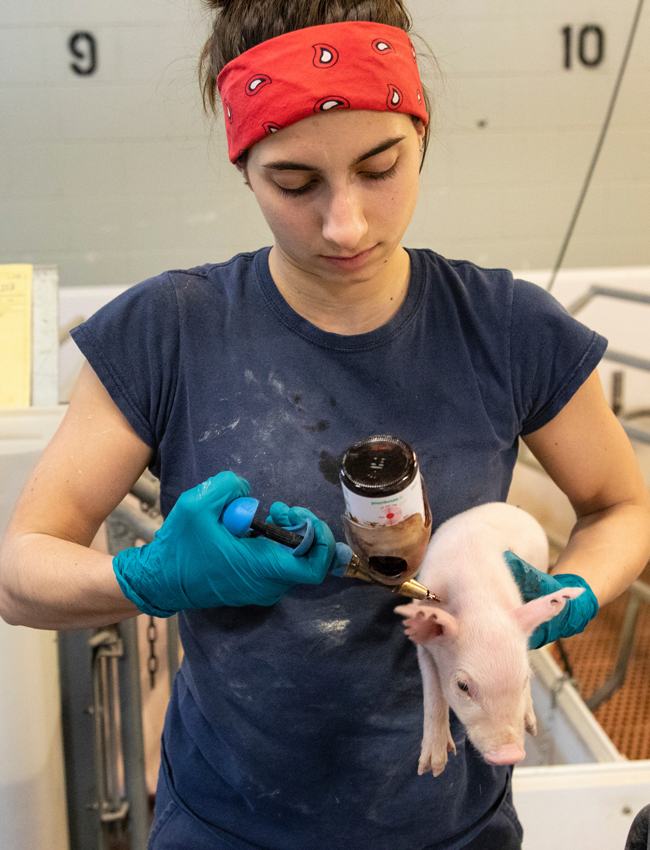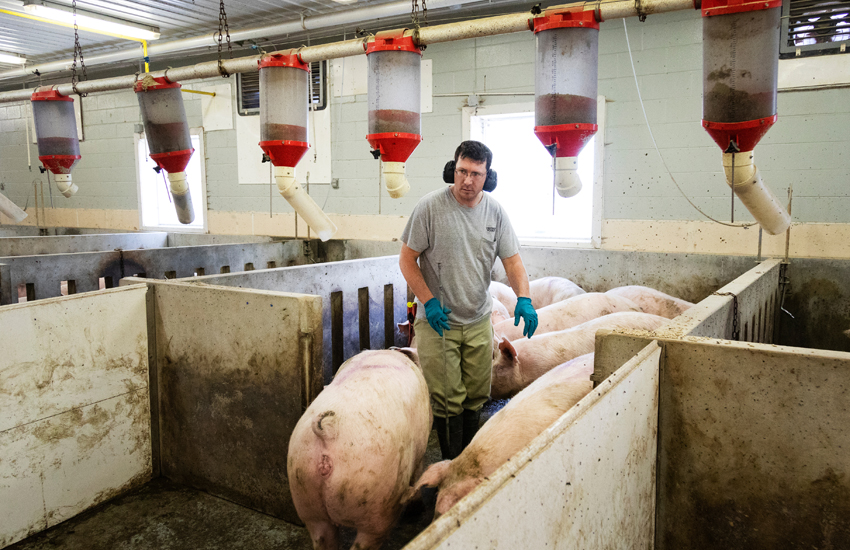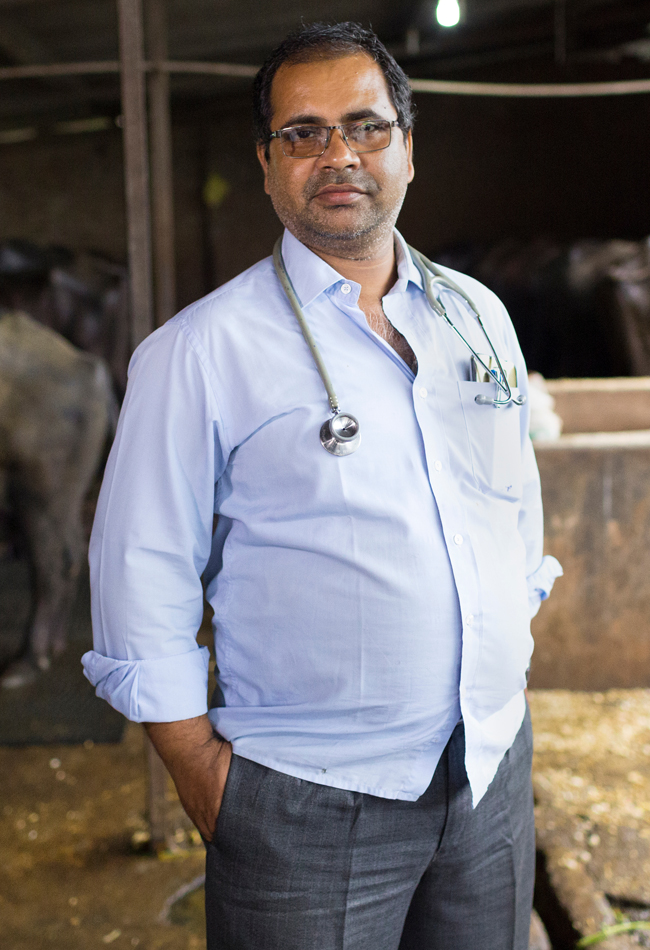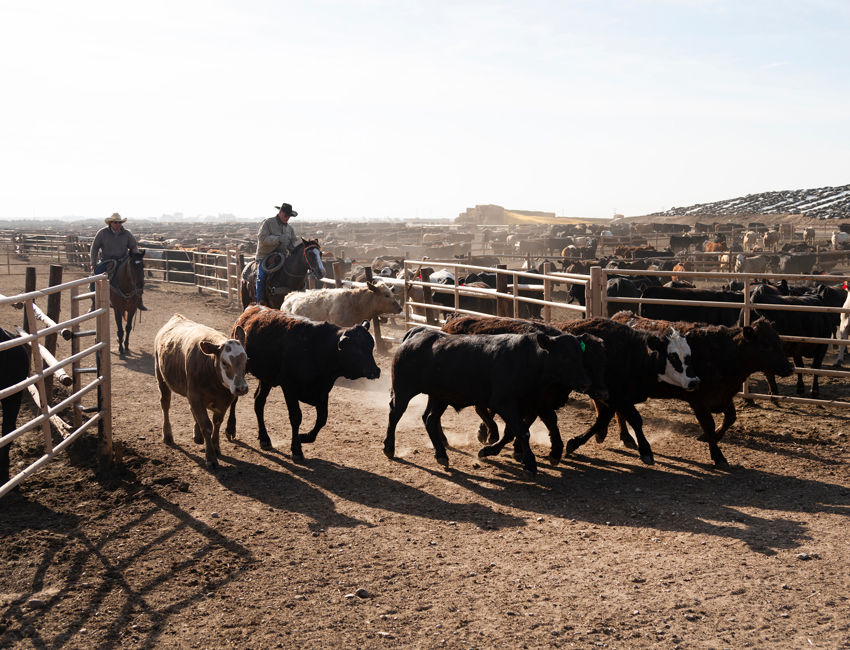Story at a glance
-
Responsible use: the Responsibility of us all
Lorem ipsum dolor sit amet, consectetur adipiscing elit.
-
Focusing on Prevention
Lorem ipsum dolor sit amet, consectetur adipiscing elit.
-
Watchful eye of the Veterinarian
Lorem ipsum dolor sit amet, consectetur adipiscing elit.
A cloud of golden feathers follows in the wake of Sandra Garcia as she carefully steps through a field of chickens on her farm in rural Spain.
Her chickens know Sandra well. She’s the ultimate surrogate mother hen, having raised the brood that surround her, pecking and scratching at the ground, from birth. It’s a cycle she’s continued for 18 years since she started working at the family business.
“I've lived here since I was four years old,” says Sandra. “I remember coming to collect the eggs with my father on Saturdays, and visiting the chickens.”
She is the third generation of her family to lead the farm, which was started by her grandfather more than 50 years ago with just 100 hens. Sandra, now the Technical Director, runs the business with her father and sister.
“It's a business that has been the life of my father, of my grandfather, my grandmother, my mother. Everybody has worked here, and it's our responsibility to keep it alive,” she says.
Now, with 600,000 hens in her care, she doesn’t take anything for granted and won’t count her chickens before they’ve hatched. To secure the future of her hens and her business, she works tirelessly to keep the animals alive and in good health.
“I'm very proud of my farm because I think we’re trying to do things better every day,” says Sandra.
“We try to invest in innovation and development to use more probiotics or prebiotics and reduce the need for antibiotics.”
As is the case for any livestock operation, raising birds comes with its disease risks, including avian influenza, salmonella and Newcastle disease. But Sandra advocates prevention over cure, vaccinating her hens against disease.
“We use antibiotics only when the veterinarian tells us to use them; we never use them ourselves – it’s forbidden and we're very conscious of this,” she says.
“We use them only when it's recommended by a veterinarian; that's how we know we are [managing a hen’s health] well.”
Many global campaigns are spreading the same message, which is being put into practice far and wide all over the world to tackle the growth of antimicrobial resistance (AMR).
Figures show AMR is causing up to 700,000 human deaths every year and, according to research, if this resistance increases it could cause 10 million deaths by 2050. It means large-scale, co-ordinated intervention across human and animal health is needed.
At the University of Guelph in Ontario, Canada, they are tackling it head-on. Pork production in Canada is worth $3bn to the national economy, so it’s integral it finds ways to make it more sustainable.
The facility is a partnership with the Canadian government, the University of Guelph and Ontario Veterinary College. The high-pitched chattering and squealing of the hundreds of sows and piglets housed at the indoor facility means Research Professor Amin Ming Fan must raise her voice to be heard.
“Antimicrobial resistance is the burning issue,” she says. “We must resolve it.”
Antimicrobial resistance is the burning issue. We must resolve it.”
Amin Ming Fan,ProfessorThis is a key focus for Amin, who is developing novel food additives designed to improve swine gut health. The thinking is that better health will boost the animal’s natural immune system, which can then better ward off illness.
These types of preventative steps will be one of the most valuable tools in reducing the need for antibiotics on farm in the future. Vaccinated animals with strong immune systems protected by biosecurity, fed a good diet, and regularly visited by a veterinarian would have a lower risk of bacterial infection.
Professor Amin raises her voice to be heard over the nearby cacophony, explaining the impact of these types of measures, “[pigs] have actually been growing more efficiently, [and] we have less antimicrobial resistance concerns. So we need to develop these technologies.”
Watchful eye of the Vet
But in those parts of the world where demand is met by countless smallholders (‘Production by the masses, not mass production’ as the saying goes), the prescription of antibiotics can be less structured and consistent. And so, regulation, awareness and a strong emphasis on best practice techniques is even more important than in other parts of the world.
Veterinarian Dr Shrawan Singh is one of many veterinarians making progress in India.
“In our area, owners do not give antibiotics to their animals. It is decided by the veterinarian so that the unlawful use of antibiotics is prevented,” he explains.
India is the number one milk producer in the world. Its 70 million small-scale milk producers have created an industry worth USD$83 billion, so good animal health and production is crucial in avoiding catastrophic losses for the communities who depend upon this income. But responsible antibiotic use hasn’t always been front of mind.
In our area, owners do not give antibiotics to their animals. It is decided by the veterinarian so that the unlawful use of antibiotics is prevented.”
Dr Shrawan Sigh,Indian VeterinarianNow, times are changing. Veterinarians are highly influential in India, where 70% of the population are farmers. It is a responsibility Dr Singh takes very seriously.
“We are, as veterinarians, treating farmers’ animals, preventing farmers’ huge losses and therefore, we are contributing to our country,” he says.
This sentiment could just as easily be applied to Dr Singh’s colleagues halfway around the globe in the United States.
We've been afforded an opportunity to use antibiotics that typically may not even be used in human health. I don't take that responsibility lightly.”
Dr Tera Barnhardt,American VeterinarainCutting-edge control for US cattle
At one huge beef finishing facility in Kansas within the US, called Cattle Empire, the complexity of the operation means that following intricate processes and utilising new technologies are essential to saving antibiotics only for those cases where they are necessary.
“We've been afforded an opportunity to use antibiotics that typically may not even be used in human health. I don't take that responsibility lightly,” says In-house Veterinarian, Dr Tera Barnhardt.
With such a large quantity of cattle under her watch, you can see why. Cattle Empire is the fifth-largest cattle feeding operation in the US, housing thousands of animals, of varying breeds, which have come from farms across the country for finishing.
Dr Barnhardt explains that robust protocols must be followed as soon as the cattle arrive at the facilities to secure the health of the herd.
“They have a different set of genetics, a different set of health challenges and they all come to our feed yard to be finished out,” she explains.
“We have to take into consideration all of those different challenges that the immune system might handle and how we can best prepare those immune systems to keep the cattle healthy throughout the feeding process.”
The animals are given vaccinations, ear tags and any parasitical they may need to secure their health. Special technology is employed to then monitor the animals, and Dr Barnhardt uses the data to spot any signs of illness.
“Vaccination is the point when we can utilise the animal’s immune system to prevent disease, which is obviously a veterinarian’s goal.
But she acknowledges the importance of antibiotics to treat her animals when they need it.
“It's very important that we have the ability to treat animals when they are sick because disease and sickness is painful and it can cause suffering,” she adds.
Dr Barnhardt’s recognition of the significance of these antibiotics is hugely encouraging – she views the bigger picture with a One Health approach.
She says: “I believe antibiotics are an important technology we can utilize to control and prevent disease in cattle. But it's important to me as a mom, and as a veterinarian to judicially use this technology.”
From Spain to Canada to India to the U.S., it is clear this message is being heard across the animal health sector.
Technology for efficiency and sustainability
Next storyOther stories
- A Lifetime of Mutual Care
- Health, Husbandry and Heritage
- Pride in Profession
- From Lab to Land
- The Long Walk towards Rabies Eradication
- Healthy Animals Drive Economic Growth
- Responsible use: the responsibility of us all
- Innovation for Sustainable Production
- Farming to feed a growing world
- Protecting Animals Protects People


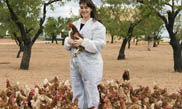
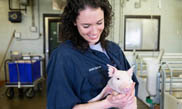
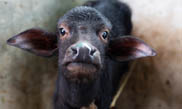

![Protecting the health and welfare of her hens is a difficult task for Sandra Garcia. It requires hard work and lots of preventative care, but she is “proud of [her] farm because [she is] trying to do things better every day.”](images/gallery/gallery_img_62.jpg)
